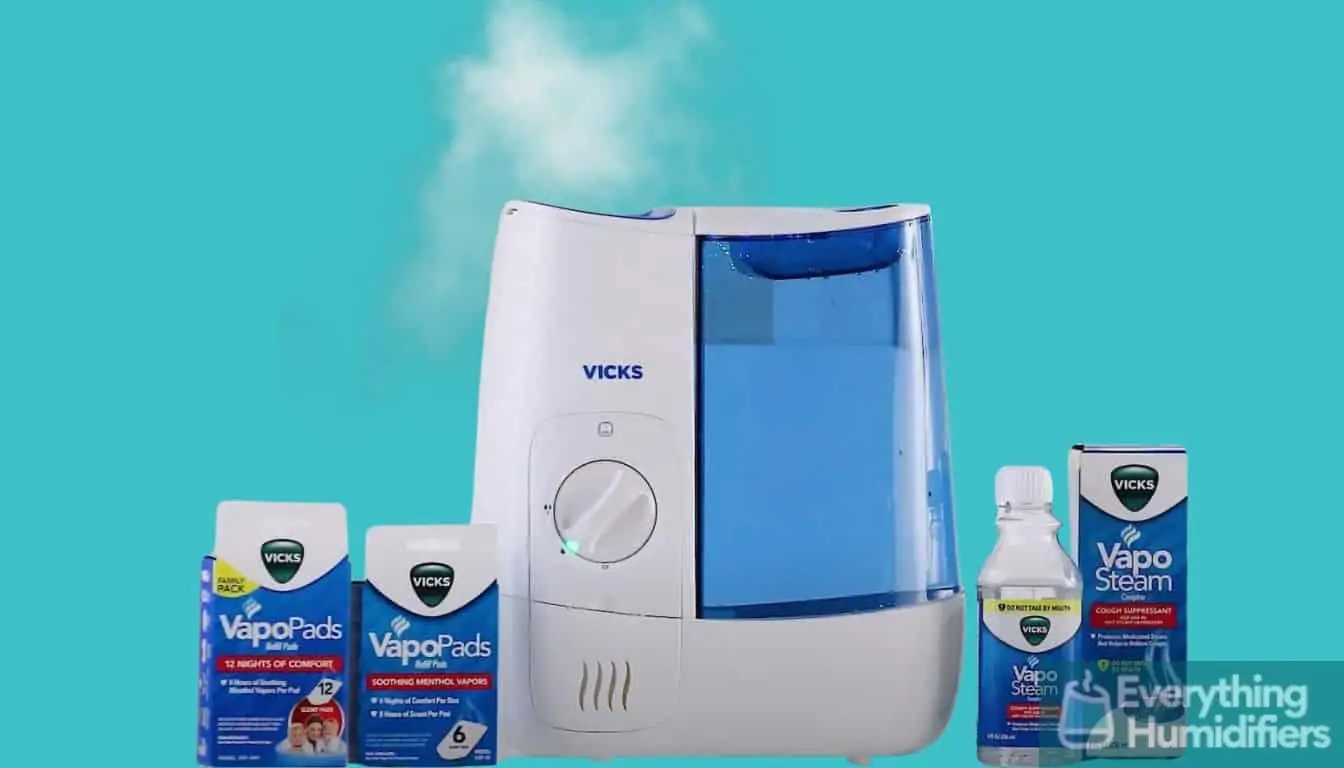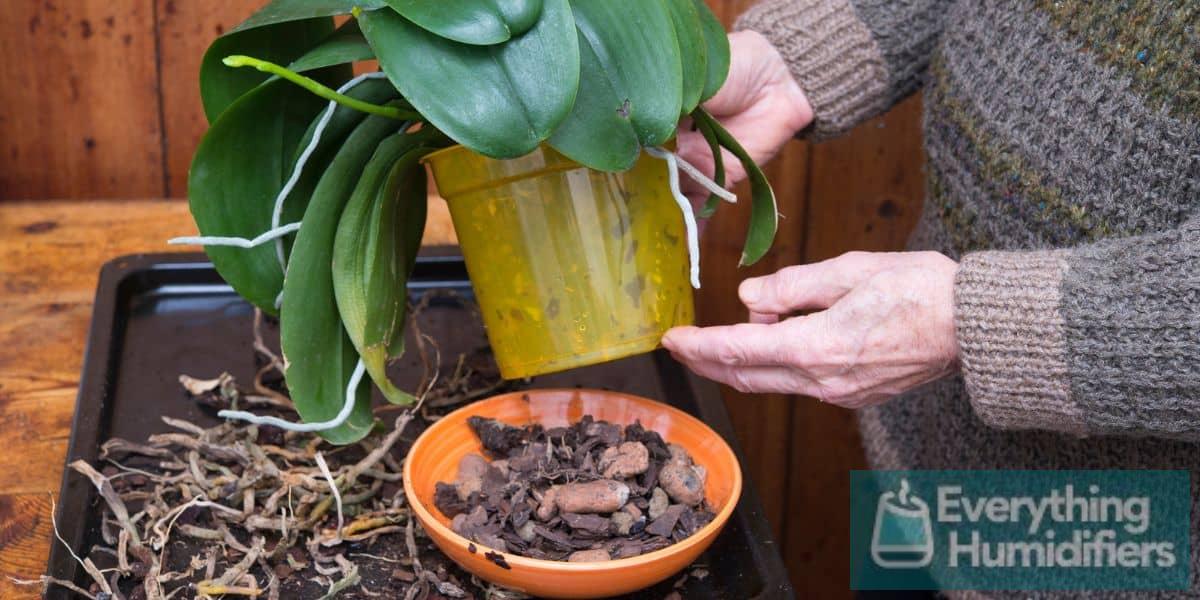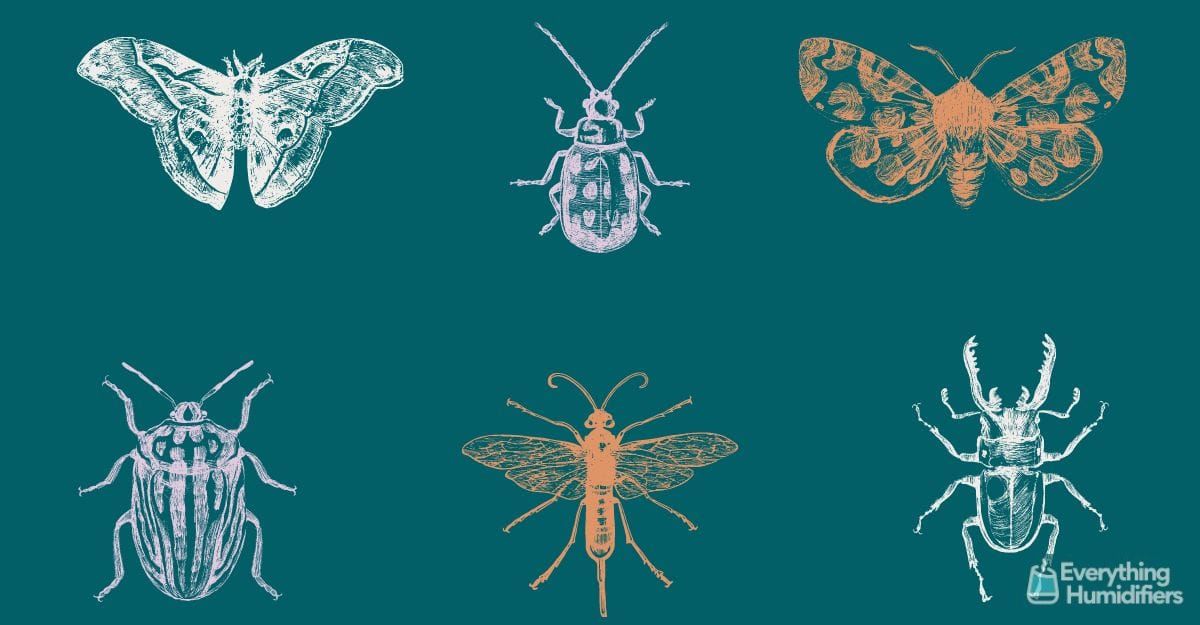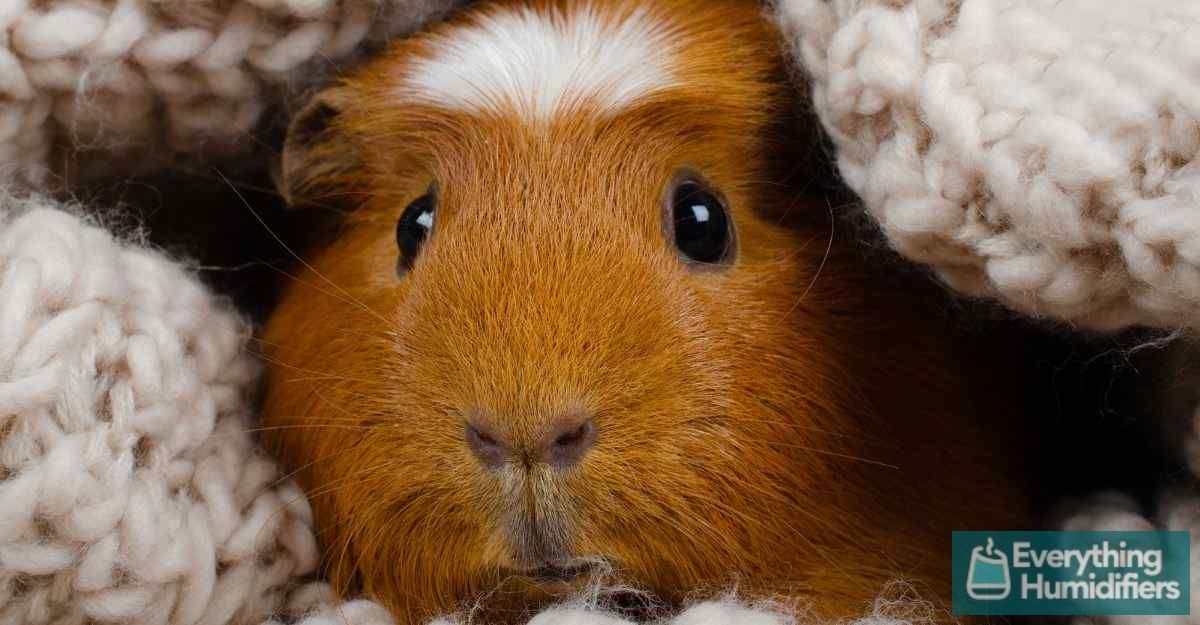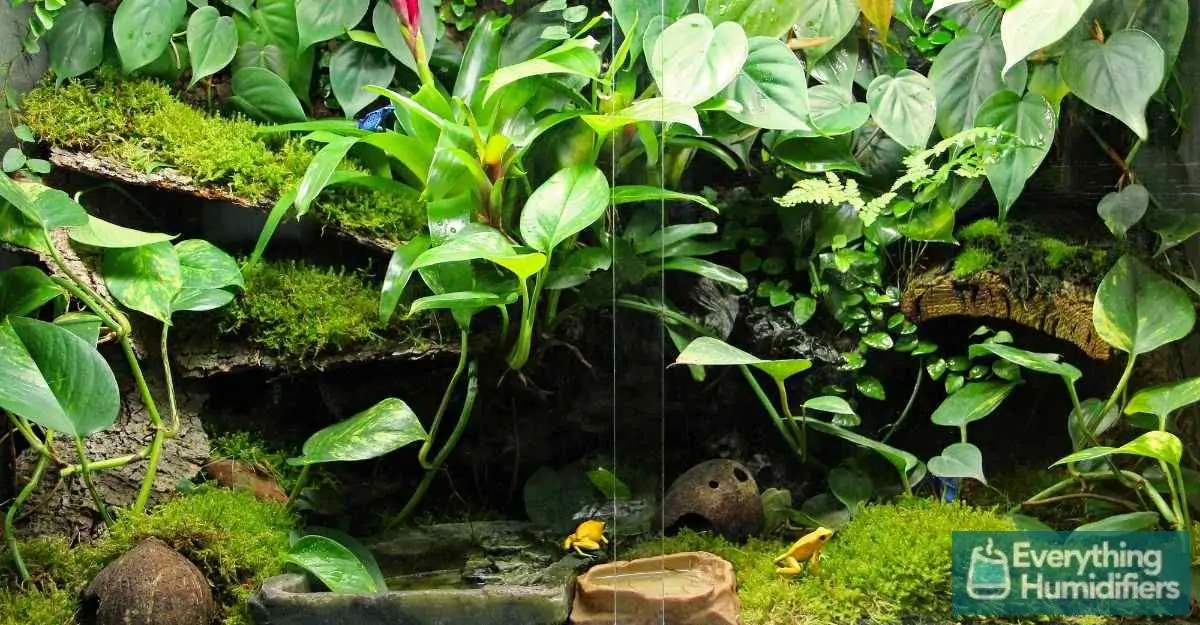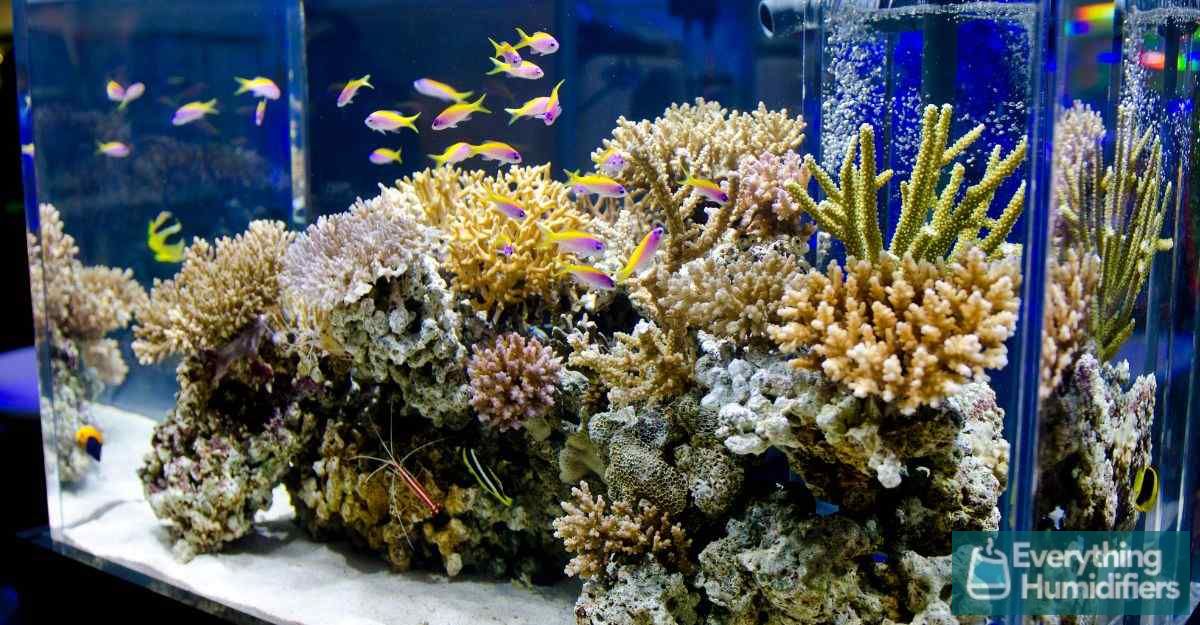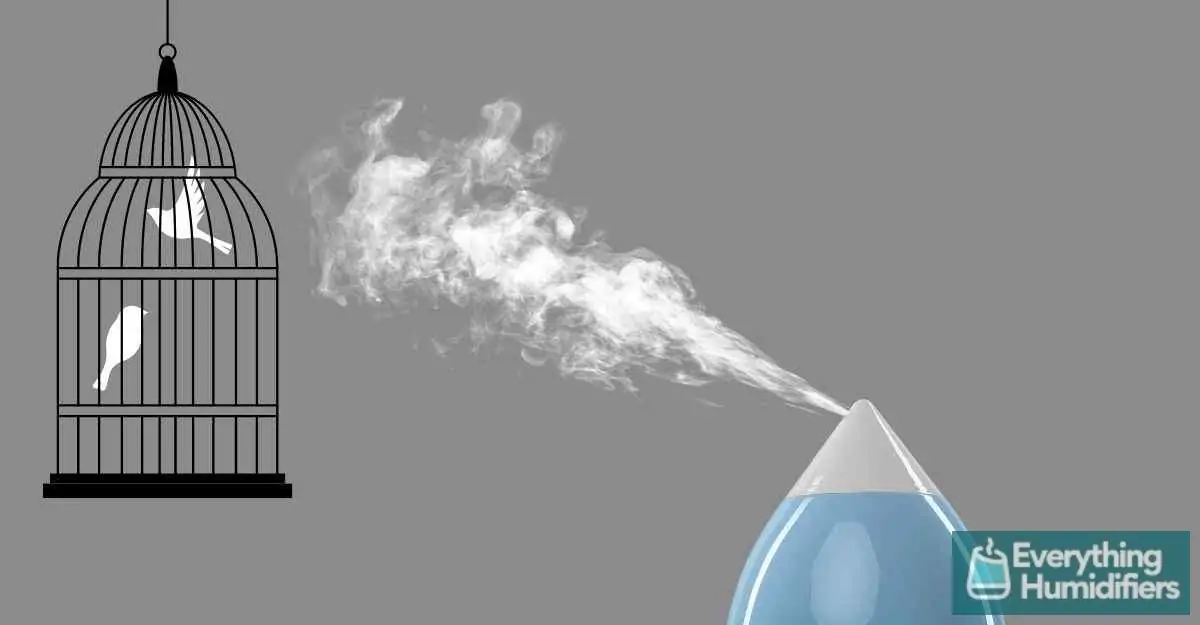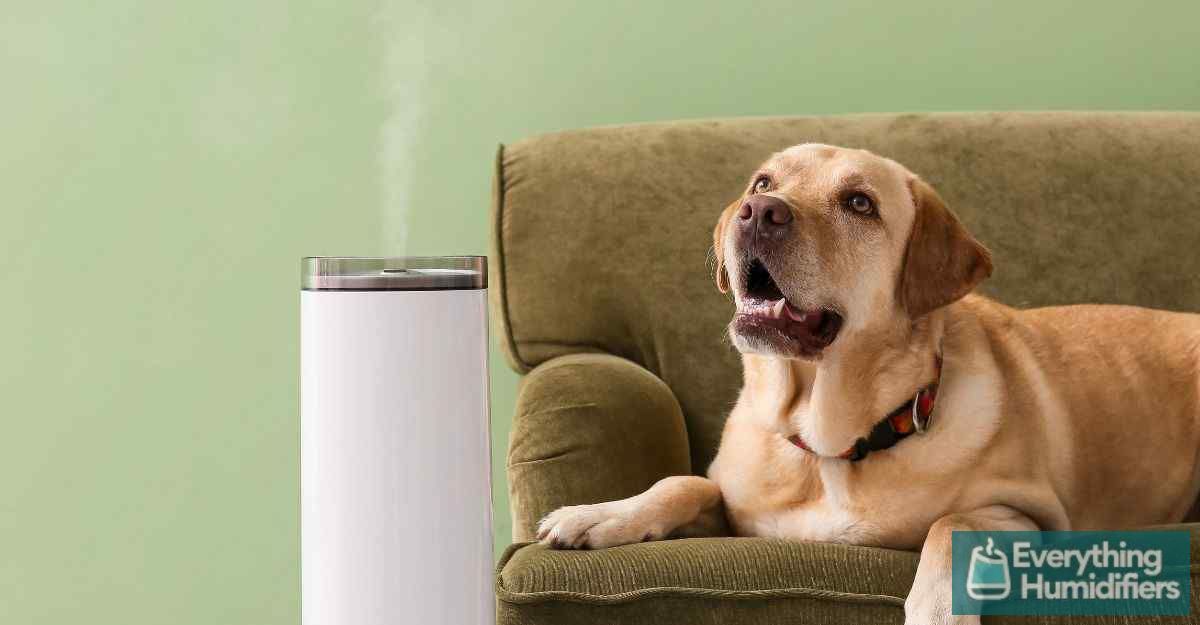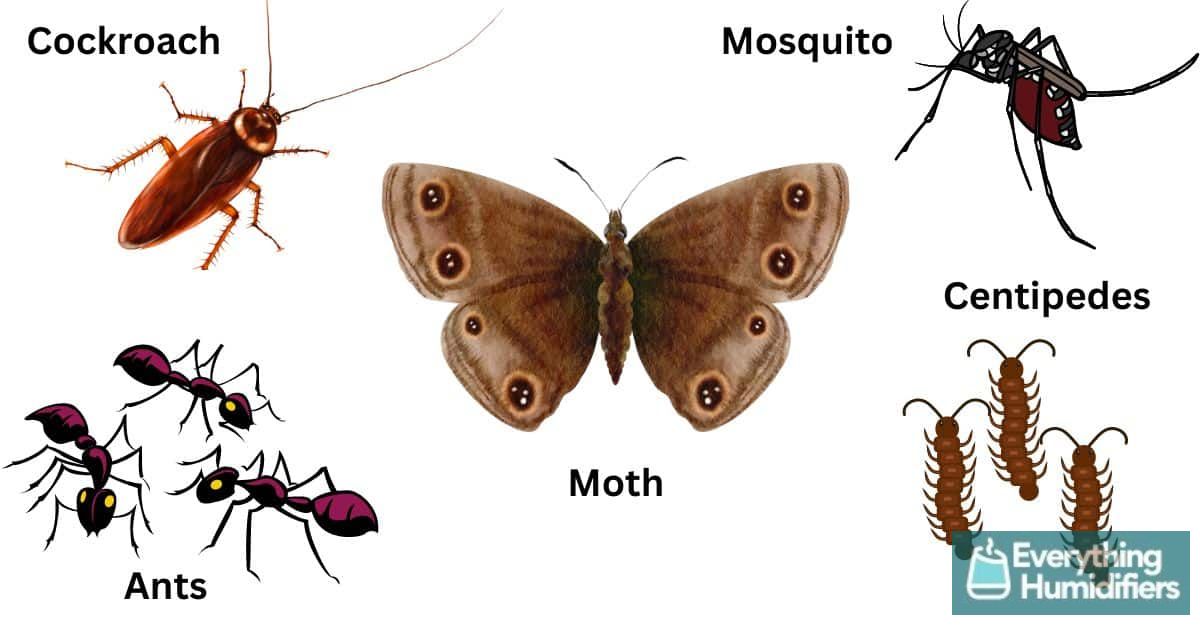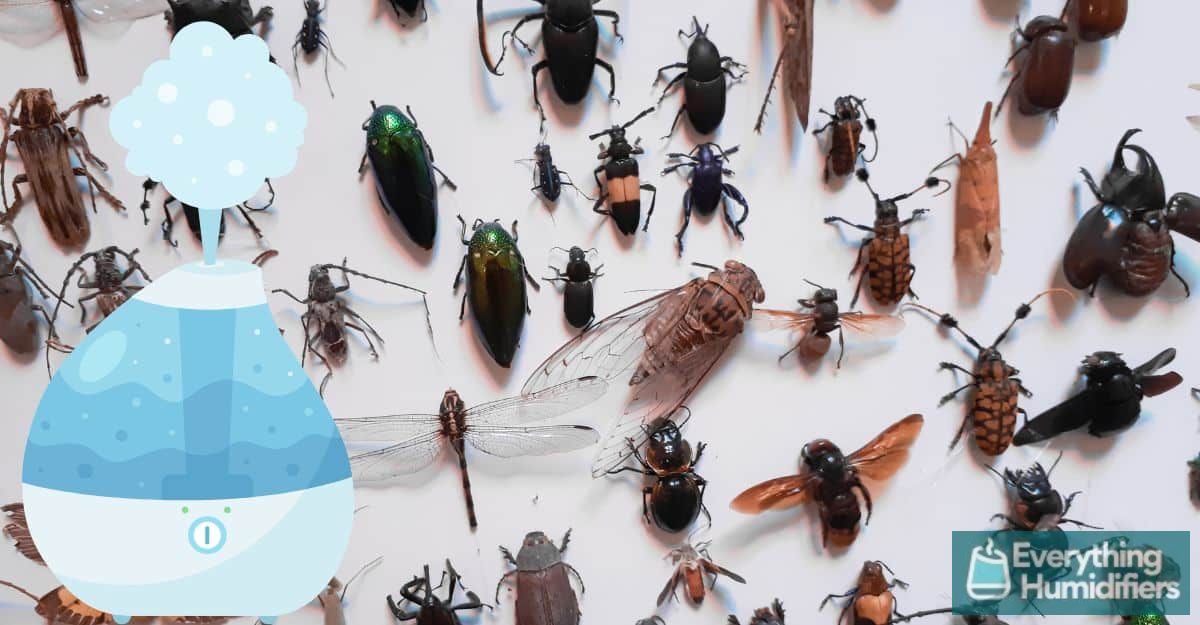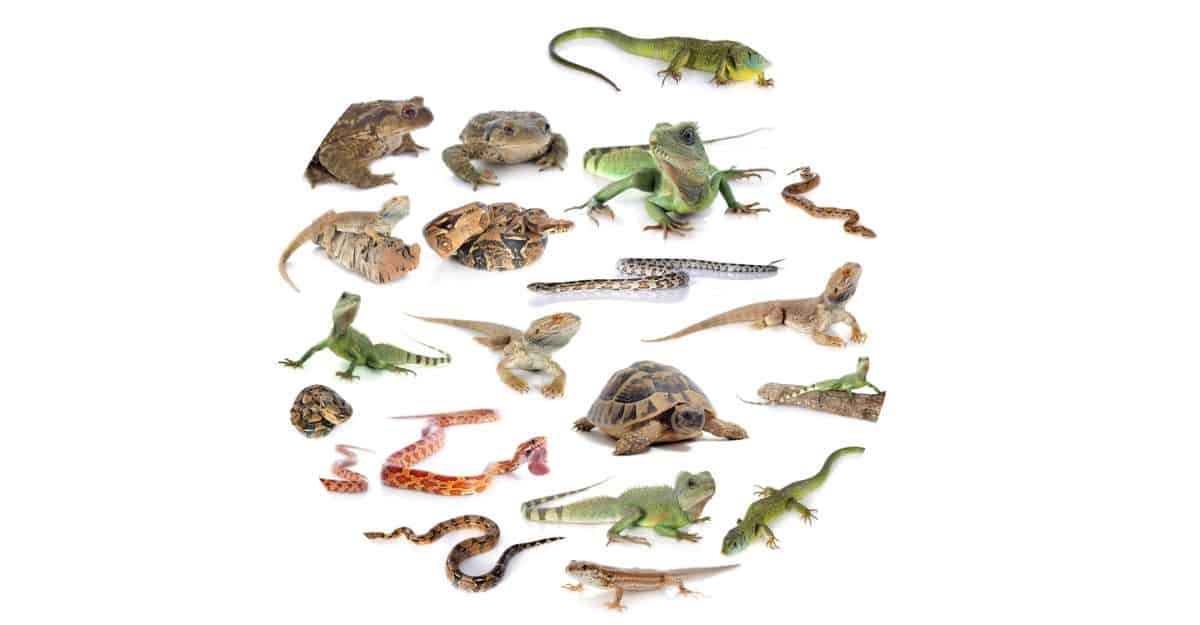Terrariums offer an easy and low-maintenance way to bring the beauty of nature into your home. These miniature gardens in glass containers will surely be a conversation starter when guests come around.
Orchids can survive in a terrarium under the right conditions. Species that require high humidity, minimal space, and indirect light, such as Phalaenopsis and some types of Dendrobium, thrive in indoor terrariums. You must ensure that you create the perfect micro-climate for your plants.
Growing orchids in a terrarium is a rewarding experience. If you have yet to explore terrariums, let’s look at what you need to know about orchids, humidity, and terrariums.
Table of Contents
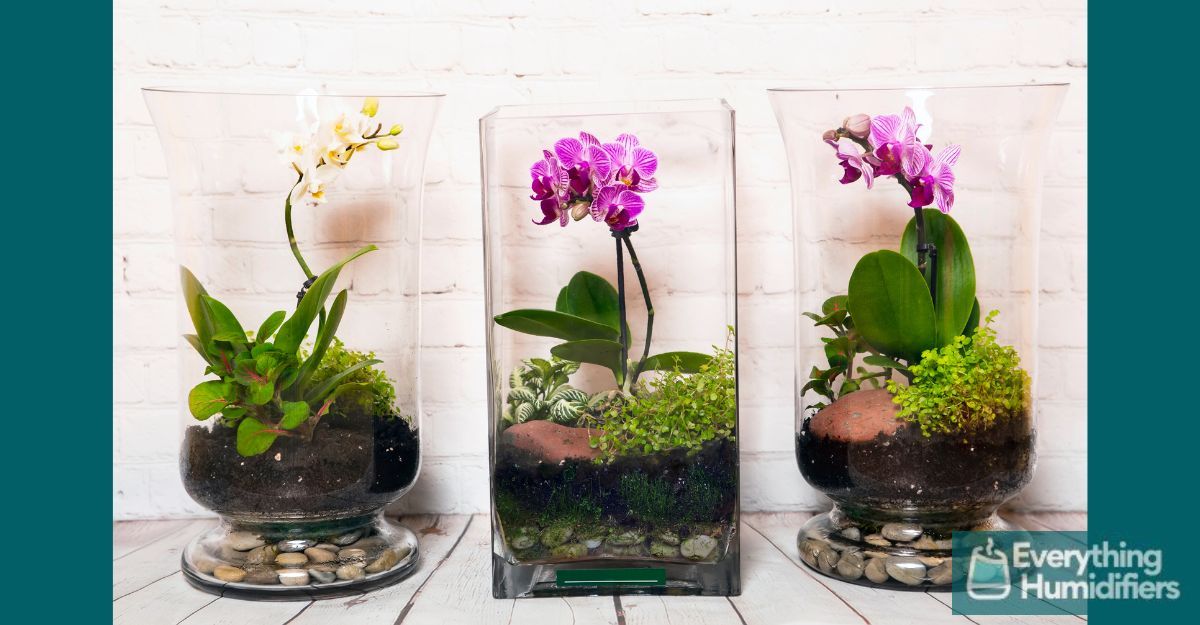
What is a terrarium?
A terrarium is a miniature garden created in a glass container to mimic a natural environment. It becomes a self-sustaining ecosystem that can include different types of plants, insects, or reptiles.
The container is usually clear, made of perspex, glass or plastic, allowing you to see inside.
The design can be open or closed. Closed terrariums are chosen to create micro-climates of higher humidity that are ideal for growing miniature orchids.
What are the benefits of a terrarium?
Here are some of the benefits of terrariums
They are low maintenance
When compared to traditional potted plants, they require far less maintenance. Because they create their own mini-ecosystems, you can water and fertilize less often.
Adds greenery to smaller indoor spaces
Terrariums bring nature into smaller indoor spaces, ideal for in-city apartments and offices. They also add a wonderful decorative touch to bedrooms, bathrooms, family rooms, and breakfast nooks.
They require less light
Plants in terrariums are usually chosen for their ability to grow in lower light or indirect light. This makes them ideal for spaces that have limited natural light.
Creates a relaxing environment
Terrariums are calming, providing a serene environment for relaxing or meditating.
They are an educational hobby for the family
Get the kids involved and let them learn all about plants and the environments they grow in. These mini eco-systems are great fun and offer a fabulous educational opportunity.
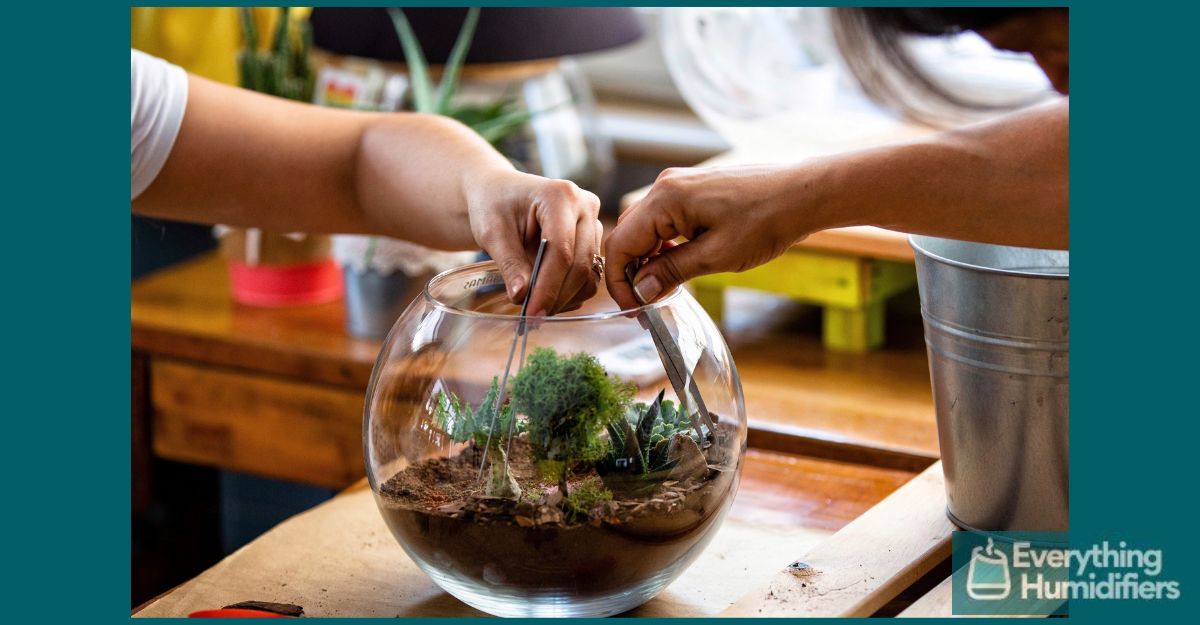
Orchids and humidity
Humidity is vital for orchids. They grow naturally in lush tropical forest regions and cloud forests with moist, warm, and humid air.
High humidity means that a reading given by a hygrometer device will indicate percentage levels of 50% or higher.
Many orchids require humidity as high as 80%. By comparison, low humidity readings will be in the range of 30% or less. You can learn more about how a Hygrometer works here.
Signs that the humidity is too high to too low will affect your orchids in ways that can be seen at a glance. Look out for:
Leaf drop – Leaf drop is caused by both high and low humidity.
Flowers falling off – This is due to low humidity. Orchids lose their flowers in cycles of 6 to 10 weeks. If your flowers are dropping off, you need to increase the humidity in your terrarium.
Wrinkled foliage – If the humidity is too low, the air will be dry. Foliage will turn yellow and start to wrinkle and crack.
Plant shrinking over time – A healthy plant should not shrink. This is a sure sign of low humidity.
While this may sound daunting, can orchids survive in a terrarium? The answer is Yes, they certainly can. Once you have the perfect conditions in your terrarium, your orchids will live happily for many years.
Let’s look at popular terrarium orchids and humidity levels
Here are some examples of popular terrarium orchids and the ideal humidity levels that the orchids love.
| Small Orchid Varieties | Humidity level recommended |
|---|---|
| Oncidium (Dancing Lady Orchid) | 30 to 60% |
| Paphiopedilums (Venus Slipper) | 40 to 50% |
| Cattleya | 40 to 70% |
| Phalaenopsis (Moth Orchid) | 50% |
| Tolumnia (Equitant Oncidium) | 50 to 70% |
| Dendrobrium | 50 to 80% |
| Ludisia discolor (Jewel Orchid) | 50 to 80% |
| Angraecum | 60 to 80% |
| Dracula (Monkey Face Orchid) | 60 to 80% |
| Laelia (Japanese Orchid | 60 to 80% |
| Lepanthes | 60 to 80% |
| Platystele | 70% |
| Aerangis | 70 to 85% |
| Masdevallia (Kite Orchid) | 70% and above |
| Anoectochilus chapaensis (Jewel Orchid) | 80% or more |
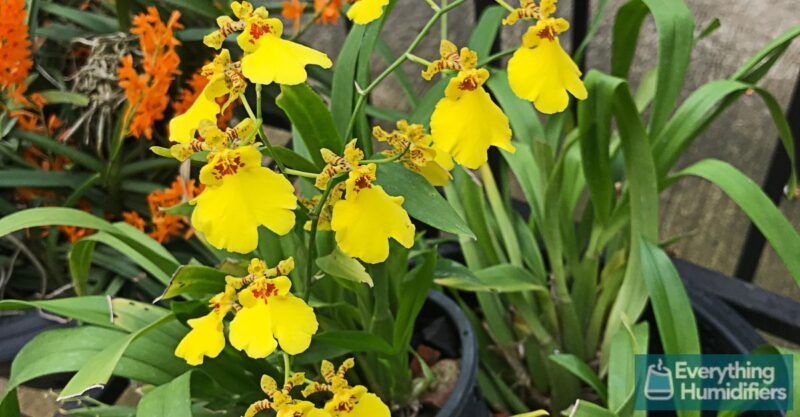
The Dancing Lady Orchids, also known as Oncidiums
Prefer moderate humidity levels ranging from 30% to 60%.
A humidity level lower than 30% can cause the leaves of the orchid to wilt and dry up.
A humidity level higher than 60% can make the orchid vulnerable to fungal and bacterial infections.
To maintain the appropriate humidity level for your Oncidium orchids, you can either regularly mist the leaves or utilize a humidifier.
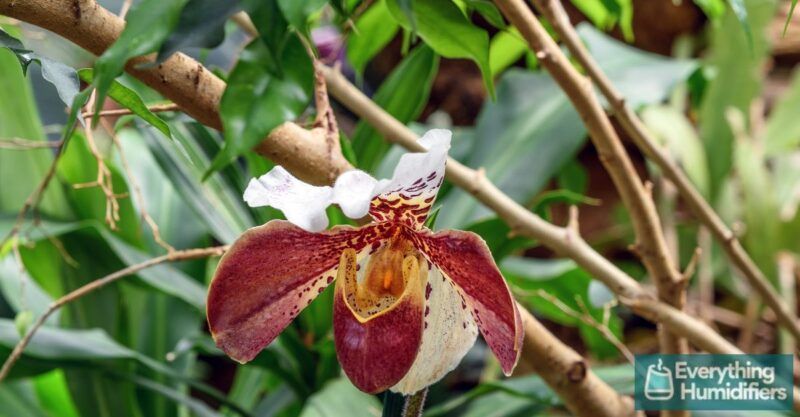
Paphiopedilums (Venus Slipper)
Possess a distinct blossom in the shape of a slipper and necessitate a humidity level of 40% to 50%.
Supervising these orchids is crucial, as they can be susceptible to excessive watering and low temperatures.
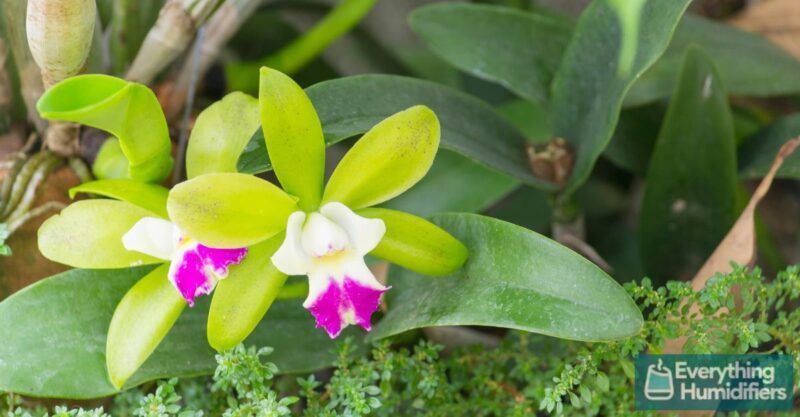
Cattleya orchids
Require a humidity range of 40% to 70%. This ensures the leaves do not dry or become brittle due to stress and water depletion.
Growers can preserve the optimum humidity by misting their Cattleya orchids daily, operating a humidifier, or growing them in a greenhouse or terrarium.
Moreover, situating the plants on a dish with pebbles and water can also boost the humidity levels surrounding the orchids.
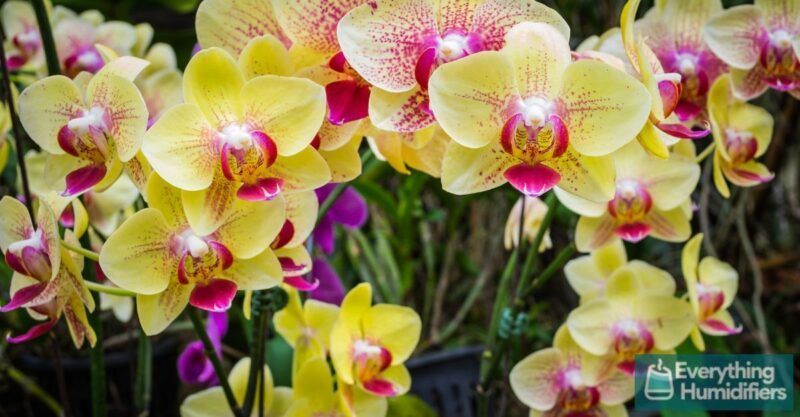
Phalaenopsis (moth orchids)
Are the most popular species for a terrarium. They require 50% humidity and are the perfect miniature orchids for terrariums.
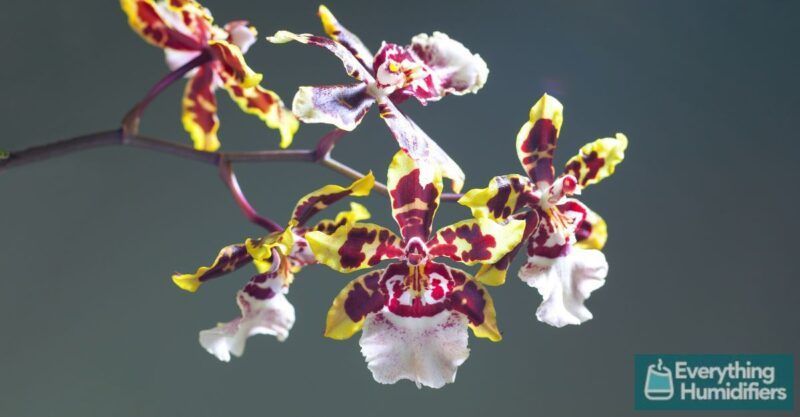
Tolumnia orchids, also called equitant oncidiums
Are a highly sought-after type of orchid to keep in your terrarium. These orchids can flourish in environments with lower humidity levels, usually around 50 to 70 percent. Their favored position is at the top of your terrarium.
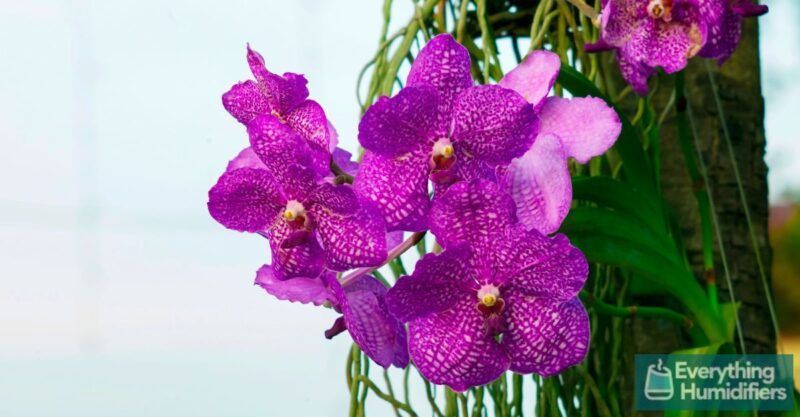
Dendrobium orchids
Famous for their vibrant colors and long-lasting blooms. In their natural habitat, Dendrobiums grow on tree branches and along riverbanks, where they receive filtered sunlight and high humidity.
The best way to maintain the proper humidity levels is to mist the orchids daily with a spray bottle. Proper care and a suitable environment will ensure your Dendrobium orchids thrive in your terrarium.
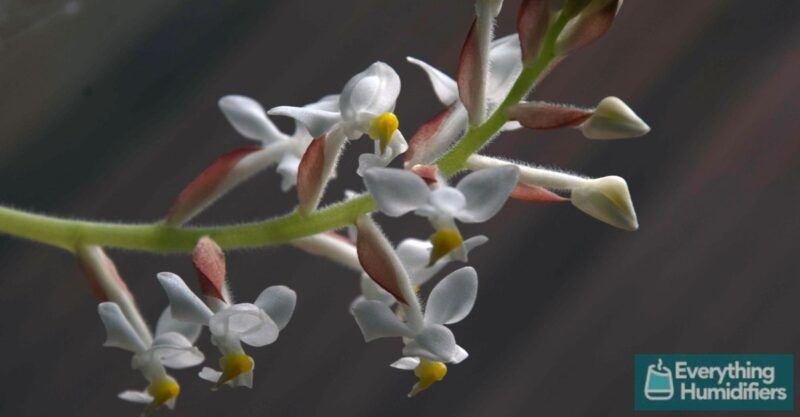
Ludisia discolor (Jewel Orchid)
Is ideal for growing in a terrarium. It requires medium to high humidity of 50% – 80%. Jewel orchids are stunning miniature orchids for terrariums.
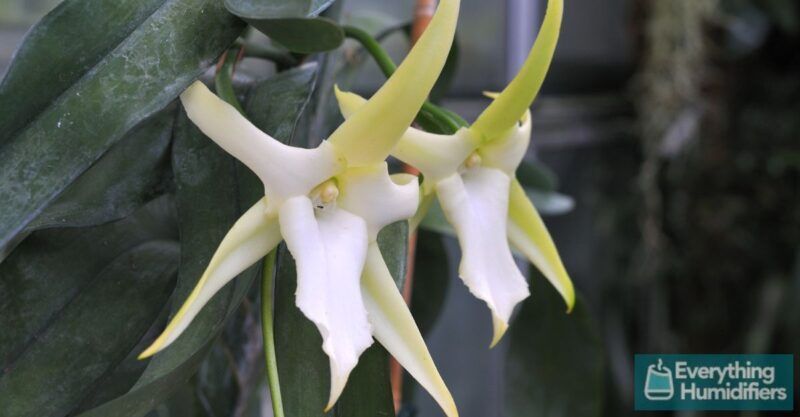
The Angraecum orchid
Comes in miniature forms, is an epiphyte that needs a tropical humidity level between 60 to 80%. They do best in bright, indirect light and moist but not soggy soil.
Additionally, providing adequate air circulation and maintaining consistent temperatures between 60 to 80°F (15 to 27°C) can help ensure your Angraecum thrives.
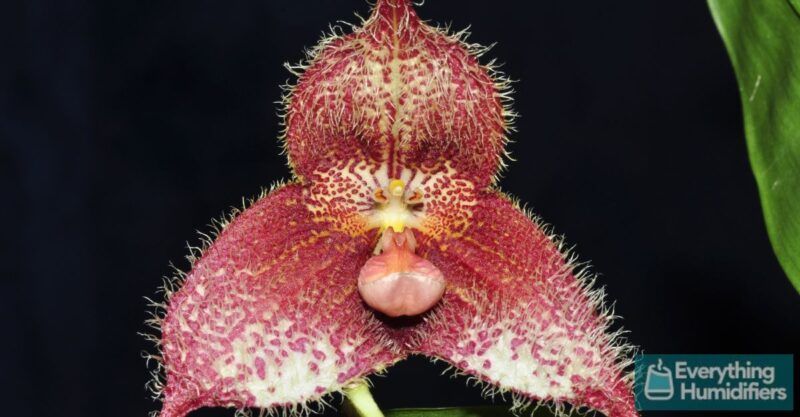
The Dracula orchids (Monkey Face)
Thrive in cool weather. Hence it is advisable to keep your terrarium out of direct sunlight. They tend to thrive in low-light environments with high moisture levels.
To create an ideal environment for Dracula orchids, keep the temperature between 55-70°F and maintain humidity levels of around 75-85%.
It is vital to provide good air circulation to prevent any fungal or bacterial growth. You can achieve this by opening the terrarium lid periodically or using a small fan.
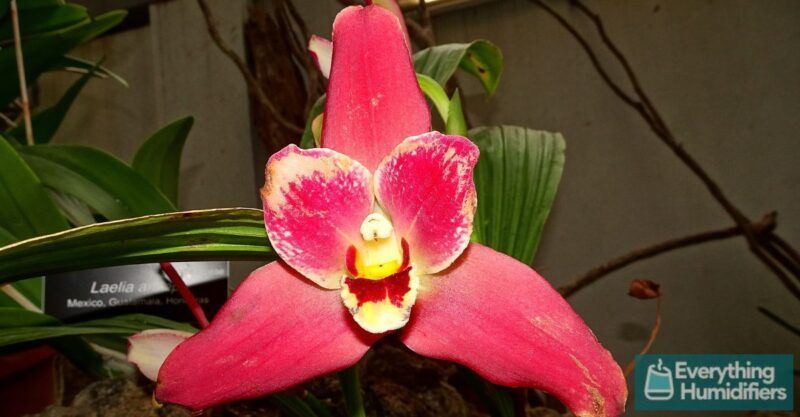
Laelia
A type of orchid that grows on other plants, requires humidity levels between 60 and 80% due to its subtropical origins.
These orchids thrive in a warm and humid environment ranging from 55 to 85°F, making closed-top terrariums with lids the optimal choice. We recommend misting the plants for adequate moisture or using a humidity tray or humidifier.
Lepanthes orchids
Are tiny, so they are perfect for terrariums. High 60 to 80 percent humidity requirements and low to medium light is needed for them to thrive.
Lepanthes orchids are easy to care for, making them perfect for beginner orchid enthusiasts. Their unique and intricate blooms make a great addition to any terrarium or home décor.
Platystele Misers’s
Blooms are small, but they provide great-looking foliage. These orchids are native to Central and South American rainforests, known for their high humidity levels.
In captivity, it is essential to replicate their natural environment as closely as possible by keeping the humidity level at around 80%.
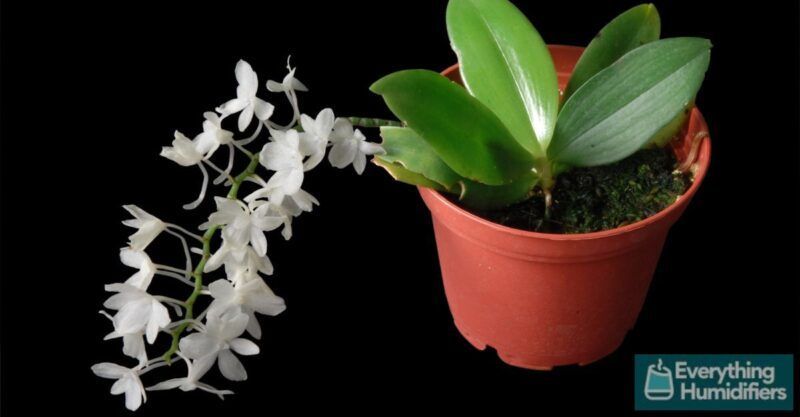
Aerangis
Miniature, epiphytic (grows upon another plant) orchids perfect for terrariums.
Aerangis Citrata is a miniature orchid that prefers humidity of 70 to 85 percent and is like shadier areas of the terrarium.

Masdevallia (Kite orchids)
Miniature orchids, perfect for small terrariums. They require high humidity of around 70%, grow in low to medium light, and prefer cool temperatures between 50-70°F (10-21°C).
Unique kite-shaped flowers are available in various colors, including red, orange, yellow, purple, and white. Despite their small size, Masdevallia orchids are a beautiful addition to any plant collection and bring exotic elegance to any room.
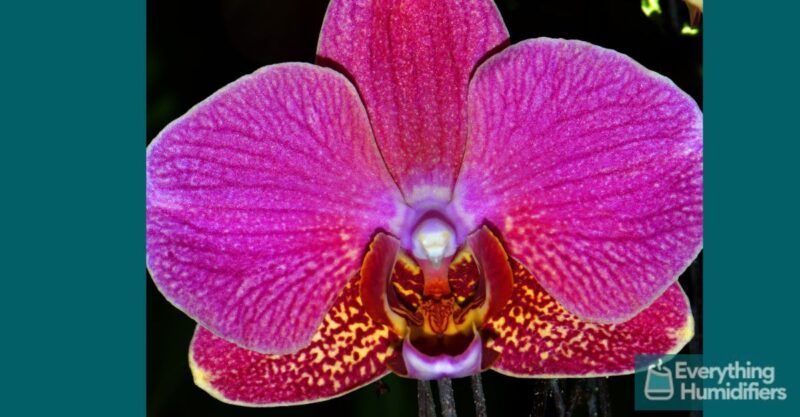
Anoectochilus chapaensis, also known as Jewel Orchids
Enjoy low light and high humidity levels of 80% or more. Native to the mountainous regions of Southeast Asia they have distinctive foliage that looks like it is covered in metallic-colored crystals, giving them a jewel-like appearance.
Jewel Orchids are epiphytic plants, which means they grow on trees and other plants rather than in soil. In the wild, they can grow in the shady understory of the forest.
When growing Jewel Orchids at home, providing them with the proper growing conditions is essential.
They prefer indirect or filtered light, as direct sunlight can scorch their leaves. They also require high humidity, which can be achieved by using a pebble tray or a humidifier.
Terrariums and humidity
Maintaining consistent humidity levels in your terrarium is vital for your orchids.
Here are some ways to ensure optimum humidity:
Select a container – If your chosen orchid requires high humidity, select an enclosed terrarium with a lid because it will hold the humidity longer. While an open terrarium will be great for orchids happier at lower humidity levels.
Clean the terrarium container – thoroughly clean with mild dish-washing soap, rinse, and allow it to dry before adding your plants.
Choose your orchid – Not all orchids will flourish in a terrarium. Choose small varieties that grow in low light and enjoy high humidity. Do not overcrowd the terrarium; your orchid should be the show’s hero!
Water well – Watering helps to maintain the humidity level in a terrarium. Because of the enclosed space, too much watering can cause root rot and encourage mold to grow. A spray bottle is an easy way to add moisture to your ecosystem.
Add layers of moisture-retaining material – Adding sphagnum moss, peat moss, or activated charcoal will help retain moisture.
The layers can be placed at the base of the container and on top of the soil around the plants. Adding coconut coir or vermiculite to the soil will also help maintain humidity.
A false bottom for your terrarium can help avoid the collection of too much water. Amanda from Orchidaria explains more in her article Orchid Terrariums: Building a False Bottom That’s Efficient.
Ensure that your terrarium has ventilation – Airflow is vital for orchids. If air cannot flow around your plants, they will always be damp and can be attacked by mold and bacteria.
Make sure that there is room for the air to circulate inside the terrarium. A fan nearby can greatly help air circulation if there is no natural air circulation.
Keep your terrarium out of the direct sun – Orchids do not enjoy direct sunlight. They do best in indirect and even in low light.
Direct sunlight will cause your glass orchid terrarium to heat up, moisture will evaporate, and the humidity level will drop.
Over time your orchid might get scorched or die of heat exhaustion.
Include filler plants – Choose plants like small ferns, short crotons, dracaenas, selaginella, and peperomia will help bind the soil and retain moisture.
Measure the humidity with a hygrometer – Monitor the humidity level with a hygrometer, and make adjustments as required.
Misting – if you do not need to increase the humidity a lot, be sure to mist your terrarium regularly. Be sure to take notice of the signs the humidity is too low or high to help you work out when to mist.
Install a humidifier – A regular humidifier is too large to be installed inside your terrarium and won’t look that attractive. There are some small foggers used for reptiles that may work well, depending on the size of your container.
Installing a room humidifier will increase the humidity in the air and benefit the micro-climate inside your open top terrarium. Choose an aesthetically pleasing model that adds to your space’s décor theme.
Innovative models can maintain preset levels of humidity without intervention on your part, making them an ideal choice. For more about other features that will assist you to choose the best humidifier for orchids see our Humidifier for Orchids post.
Use distilled water to avoid humidifier white dust settling within the orchid enclosure.
Are you up for the challenge? Make an Orchid Terrarium
Unless you live in a naturally humid climate with free-flowing breezes, orchids may not be the easiest plants to grow at home. They are fragile, delicate, and sensitive to light, humidity, and temperature levels.
Undoubtedly, orchids are captivating beauties, each with personalities of their own. Nurturing one or more is rewarding.
Growing miniature orchids in a terrarium can be an excellent way for a beginner to start an orchid collection. A terrarium makes the process easier and more exciting.
Here is an article from Wikihow on how to build your own terrarium.
Why not give it a try?


